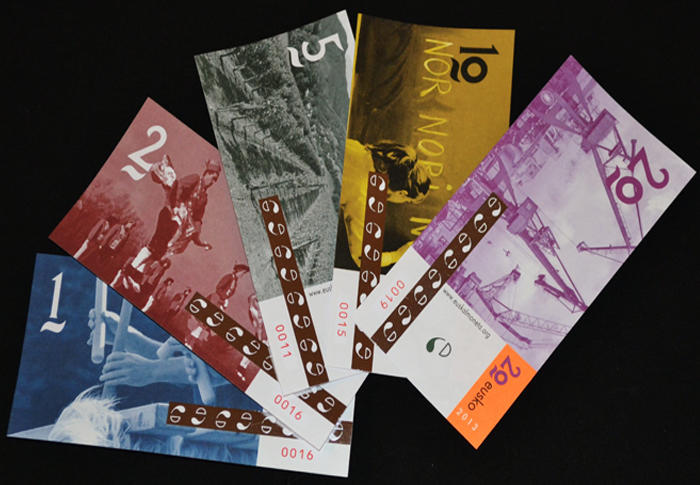Whether we like it or not, money makes the world go around. And it is one of the factors that gives a nation its identity. Can anyone imagine the United States without the greenback? And, that’s just one of the reasons why, for example, the United Kingdom didn’t forego the pound when it originally joined the European Union. Thus, it should come as no surprise that the Basque Country has tried to establish its own currency at various points in its history.

- Coins have been made in what one might call the Basque Country (though occupying a greater territory than what we now call the Basque Country) since the second century BC. These were inspired or motivated by Roman practices and mints appeared in numerous Basque places, particularly by the Ebro river. The first coins minted in the Basque region, that have been found, were in Arsaos, between 178 and 150 BC. Coins from this time often feature the so-called Iberian rider, holding a spear or pilum or some other weapon. These native coins were made until about 45 BC, when Caesar beat Pompey and Roman coinage took over.
- It’s not until the 11th century that new coins are made in the Basque Country, by the Kingdom of Navarre. The first of these coins was made by Sancho the Great, King of Pamplona from 1004 until his death in 1035. His coins were probably made in Nájera. His descendants also had coins made and this led to the term “sanchete” for money. Coins were produced in Navarre until 1835, when money in what became Spain became centralized.
- This is all in what became Spain. In France, coins were minted in Behe Nafarroa, or Lower Navarre, by he-who-would-become king Henry IV of France.
- In 1937, the Government of Euzkadi, formed after the First Statute of Autonomy of the Basque Country of 1936, issued its own coins. These coins were actually minted in Belgium. They began with coins worth 1 and 2 pesetas, and had plans to make coins of greater worth, but the the victory of Franco’s forces in the Spanish Civil War brought an end to those plans.
- Of course, today, the euro is the currency of the Basque Country, on both sides of the border. However, there have been other attempts to introduce new money. In the 1990s, the political party Herri Batasuna issued coins they called “nabarros” with the goal of promoting Basque independence.
- Most recently, the idea of micro-currencies has grown, a reaction against the centralization and unification of monies. These micro, or local, currencies only work in a small geographic region with the voluntary participation of local organizations. The “eusko“, primarly used in Iparralde, is one example. Created in 2013 by Euskal Moneta, one of the goals of having a local currency is to promote the local economy. Only local businesses will take these notes, so that encourages people to buy from them. It also promotes solidarity and identity amongst the Basques of the region. 1 eusko is worth 1 euro. A Basque in Boise has a nice overview of the eusko.
Primary source: Auñamendi Entziklopedia. MONEDA. Enciclopedia Auñamendi, online, 2020. Available at: http://aunamendi.eusko-ikaskuntza.eus/es/moneda/ar-81297/
Discover more from Buber's Basque Page
Subscribe to get the latest posts sent to your email.

